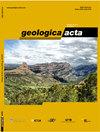Neogene-Quaternary onshore record in the lower Ebro river incised palaeovalley (Ebro margin, Catalan Coastal Range, NE Iberia)
IF 2
4区 地球科学
Q2 GEOLOGY
引用次数: 6
Abstract
The lower Ebro is a bedrock-alluvial mixed incised valley with a persistent degradational stacking architecture developed from latest Serravallian(?) to Holocene. This degradational pattern was probably controlled by isostatic rebound in NE Iberia and punctuated by major relative sea level changes that temporally accentuated or attenuated the palaeovalley entrenchment and sediment retention. Six allostratigraphic units in the palaeovalley constitute the onshore record of its evolution and the opening and connection of the Ebro Basin with the Mediterranean. This paper deals with the analysis and reinterpretation of these units in order to precise the sequence of events that took place on the onshore part of the Catalan continental margin during the Ebro River drainage entrenchment. Plausible chronology and palaeogeographic evolution of the Neogene-Quaternary drainage incision in the lower Ebro are also proposed. The early evolutionary stages of the incised palaeovalley (Latest Serravallian?-Tortonian-Early Messinian, from 11.63–9? to near 5.6Ma) were dominated by entrenchment and intense sediment transfer from the onshore to the offshore zones (erosion surface S2). These processes were only punctuated by the sedimentation of the alluvial palaeovalley unit M2 (late Messinian). The polygenetic onshore erosion surfaces S2 and S3 are linked here with the onshore erosive processes that fed the sedimentation of the terrigenous shelf-slope system of the offshore Castellon group and considered coeval with the offshore Messinian erosion surfaces (reflectors M and m). During a further evolutionary stage (Pliocene to Early Pleistocene from 5.3 to approximately 2Ma) the Early Pliocene major Mediterranean reflooding caused some sediment retention in the incised palaeovalley (sedimentation of unit P) but sediment transfer into the offshore remained very effective. In the last evolutionary stage (Early Pleistocene-Holocene, from 2Ma to present) the palaeovalley became again mainly degradational (generation of erosion surfaces S4 to S6 and sedimentation of stepped alluvial terraces Q1-2 to Q4). The onshore stratigraphic record, including the allostratigraphic units P and Q1-2 to Q4 and the related bounding surfaces S3 to S6, is correlated with the sedimentation of the terrigenous shelf-slope system of the offshore Ebro group.埃布罗河下游切割古河谷(埃布罗边缘,加泰罗尼亚海岸山脉,伊比利亚东北部)的新近系-第四纪陆上记录
埃布罗下游是一个基岩冲积混合下切河谷,具有从最新的塞拉瓦利安(?)到全新世形成的持续退化堆积结构。这种退化模式可能受到伊比利亚东北部均衡反弹的控制,并被主要的相对海平面变化所打断,这些变化在时间上加剧或减弱了古河谷的巩固和沉积物滞留。古河谷中的六个异地层单元构成了其演化以及埃布罗盆地与地中海的开放和连接的陆上记录。本文对这些单元进行了分析和重新解释,以精确确定埃布罗河流域改道期间加泰罗尼亚大陆边缘陆上部分发生的事件序列。提出了下埃布罗地区新近系-第四纪排水切口的合理年代和古地理演化规律。下切古河谷的早期演化阶段(最晚的塞拉瓦利安阶?-托托阶-早的墨西阶,从11.63–9?到5.6Ma附近)主要是从陆上到近海区域(侵蚀面S2)的沉积和强烈的沉积物转移。这些过程只是被冲积古河谷单元M2(墨西尼亚晚期)的沉积所打断。多因陆上侵蚀面S2和S3与陆上侵蚀过程有关,陆上侵蚀作用为近海Castellon群的陆架斜坡系统提供了沉积物,并被认为与近海Messinian侵蚀面(反射层M和M)同时代。在进一步的进化阶段(上新世至更新世早期,5.3至约2Ma),上新世早期主要的地中海回流在下切古河谷中造成了一些沉积物滞留(P单元沉积),但沉积物向近海的转移仍然非常有效。在最后一个进化阶段(早更新世-全新世,从2Ma到现在),古河谷再次主要退化(侵蚀面S4到S6的产生和阶梯式冲积阶地Q1-2到Q4的沉积)。陆上地层记录,包括异地层单元P和Q1-2至Q4以及相关边界面S3至S6,与近海Ebro群的陆架斜坡系统的沉积有关。
本文章由计算机程序翻译,如有差异,请以英文原文为准。
求助全文
约1分钟内获得全文
求助全文
来源期刊

Geologica Acta
地学-地质学
CiteScore
2.50
自引率
6.70%
发文量
13
审稿时长
>12 weeks
期刊介绍:
- Relevant conceptual developments in any area of the Earth Sciences.
- Studies presenting regional synthesis.
- Thematic issues or monographic volumes presenting the results from one or more research groups.
- Short papers reflecting interesting results or works in progress.
- Contributions and results from Research Projects, Workshops, Symposiums, Congresses and any relevant scientific activity related to Earth Sciences.
- Geologica Acta aims to stimulate rapid diffusion of results and efficient exchange of ideas between the widespread communities of Earth Science researchers (with special emphasis on Latinamerica, the Caribbean, Europe, the Mediterranean
 求助内容:
求助内容: 应助结果提醒方式:
应助结果提醒方式:


